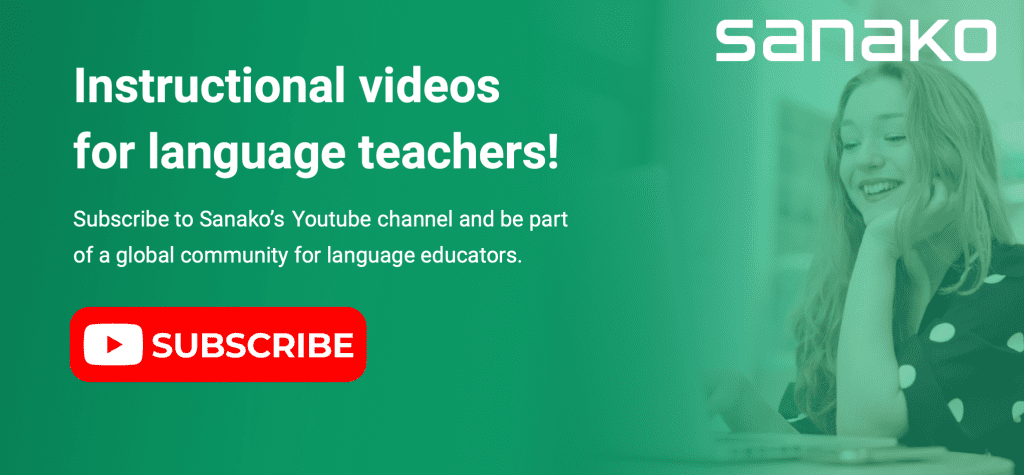English and Foreign language teaching has always been enriched by the influences of different disciplines and learning theories, from linguistics to psychology. One of the most interesting teaching methods developed from the application of psychological insights is Community Language Learning (in short, CLL). What makes this language teaching approach so interesting is the focus on learner agency.
As a part of Sanako’s mission to help language teachers to improve their teaching outcomes and teaching approaches, we continuously publish content and information on different language teaching methods and teaching tips. This insightful blog post therefore explores the Community Language Learning methodology and how language teachers could apply it into their lessons.
The principles of Community Language Learning
Community Language Learning (CLL) method was developed in the 1970s by Charles A. Curran and his colleagues at Loyola University in Chicago. Curran had a background as a counselling specialist and professor of psychology while he also was a Jesuit priest. He was inspired by the humanistic psychology of Carl Rogers, which aimed to remove the anxiety from learning by changing the dynamics between the teacher and the learner.
Transferred to the pedagogical-linguistic level, the method suggests that the optimal relationship to be established between teacher and pupil is analogous to that between therapist and client (this is also referred as counselling-learning or counselling-approach). The client in the psychotherapeutic setting is thus equated with the language learner struggling with the difficulties of learning a second language.
Just as the patient is the centre around which the psychotherapeutic process revolves, so in the CLL approach, the student is the pivot around which the choice and development of the teaching activities are structured. This means that in the CLL approach, it is the students who choose the type of activity to be carried out in the language classroom. CLL is therefore a truly learner-centered and humanistic approach to teaching languages
The teacher, in the equivalent role of counsellor, has a supportive function, encouraging group work, and communication between learners. In fulfilling this role of mediator between students and the ultimate goal of language learning, the teacher must ensure that the development of language skills takes place within a “supportive community”.
How does a CLL classroom look like?
In a CLL setting, the students sit in a circle. The teacher – who in the term of the CLL approach is also referred to as the “Knower” – sits outside the circle.
It is possible to break down a CLL lesson into five key stages:
- Brainstorming: The students begin by drawing up a list of topics of interest to them. The conversation between the students initially takes place in their mother tongue. The teacher translates the conversation between the students into the target language, transcribing the sentences on a flipchart.
- Recorded conversation: Once a topic of conversation has been chosen, students tell the teacher, in their native language, what they would like to say. The teacher, in a low voice, translates for them into the target language. The course of this phase can vary depending on the level of preparation of the students. Students with a higher level of preparation may try to express themselves directly in the target language. The conversation, conducted in the target language, is recorded by the teacher and will become the object of analysis in the final phase of the lesson.
- Discussion: After working on fluency during the recording phase, the time comes to evaluate the conversation that has just taken place. In this phase, students’ feelings about the exercise are collected.
- Transcription: Students listen to the recorded conversation and transcribe it.
- Analysis: The final stage involves teachers and learners analysing the language and vocabulary used during the second phase of the lesson. Students with more advanced training can choose which part of the conversation to analyse. In beginner classes, the teacher can guide the students in analysing the more problematic parts of the conversation.
The pros and cons of CLL teaching approach
As we mentioned in the introduction, the strength of the CLL approach is that it emphasises student’s agency within a classroom that is perceived as a supportive learning community.
In order for the classroom to truly function as a community, it is necessary for the teacher’s work to also take into account the emotional and psychological factors of language learning process. As highlighted in a study (Brown & Lee, 2015) of the CLL method, students and teacher must work together to create an environment in which target language practice can take place without Foreign language speaking anxiety.
CLL is therefore a language teaching method that aims to develop both the language skills and the emotional and social skills of learners. This characteristic, which is the CLL’s main strength, means on the other hand that this approach can only work in certain contexts. In other words, CLL is not a suitable method for all language classes and for all age levels*.
*Read also our other article where we discuss how to teach languages to different age levels.
As it has been noted, CLL is a particularly suitable approach for classes of adult learners which tends to be of a good level of linguistic preparation. Indeed, for the CLL community to function, it is necessary for students to be able to operate autonomously to a certain degree.
The teacher’s non-directive role as a counsellor can also be problematic. This is especially true in classes of young learners or students who are approaching a foreign language for the first time and who, as such, need direct support from the teacher.
One potential disadvantage of the CLL approach is that it can be challenging to create suitable lesson plans for it, especially for teachers who are more accustomed to traditional, structured teaching methods. CLL is highly responsive to the needs and interests of the learners. The lesson content and direction often emerge from the students’ questions, concerns, and topics they wish to discuss. This flexibility can make it difficult to pre-plan detailed lessons in advance.
In conclusion, CLL is a suitable method for language teachers who are looking for a whole-person learning approach, in which the learner develops not only language skills but also emotional competencies. On the other hand, it is a method that, in order to work best, should only be applied in contexts where students prove to be able to interact cooperatively and autonomous enough to design the content of the lessons.
If you’re a language teacher who’s looking for inspiration to try out new language teaching methods, then check out Sanako’s Youtube Channel for instructional videos to some of the most advanced, evidence-based approaches to language teaching and the key concepts behind them.
References used in this article:
Jack C. Richards (1986) Approaches and Methods in Language Teaching. Cambridge University Press.
This blog post was last updated 19 October, 2023.

